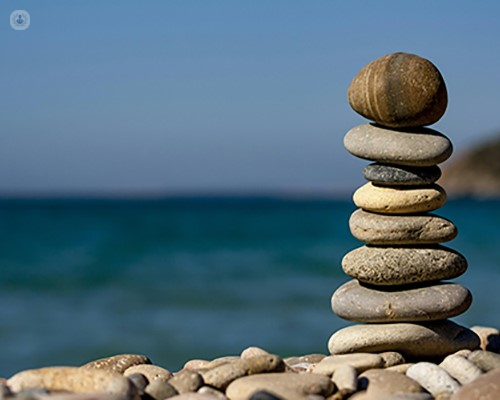When do gallstones require treatment?
Escrito por:Gallstones, crystalline formations within the gallbladder, pose a common health concern. Emerging gradually due to various factors, they can lead to discomfort and complications. In his latest online article, Mr Segun Komolafe explores the causes, symptoms, and treatment of gallstones.

What are gallstones and what cause them to develop?
Gallstones are crystalline formations that develop within the gallbladder, an organ located beneath the liver responsible for aiding in the breakdown and digestion of fatty foods. Bile, similar to free-flowing liquid, plays a crucial role in this process by emulsifying fats, allowing for their digestion and absorption. Essentially, when you consume fatty or oily foods, bile helps to break them down so your body can effectively process them. The gallbladder acts as a reservoir for bile. However, as with any storage system for chemicals, there is a potential for sedimentation and stone formation. This sedimentation occurs when certain factors predispose the bile salts to solidify into stones. Once this process begins, it can lead to the development of both small and large gallstones over time.
Can they be related to lifestyle, diet or stress?
I wouldn't attribute gallstone formation directly to stress, but your lifestyle choices can certainly influence their development. Radical changes in diet can contribute to gallstone formation, as can certain blood-related conditions. Various factors can increase your susceptibility. However, for most individuals, gallstones simply develop over time as a part of living life, as they gradually accumulate and form within the gallbladder.
What signs or symptoms do patients usually experience?
Many patients with gallstones are actually asymptomatic, meaning they experience no noticeable symptoms. In these cases, the gallstones are essentially innocent bystanders, identified through ultrasound scans despite causing no discomfort. However, symptomatic gallstones typically manifest as pain beneath the right ribs, particularly after consuming fatty foods. These are the classic symptoms associated with gallstones. If gallstones migrate from the gallbladder into the bile ducts, they can trigger additional symptoms such as bile duct infections or pancreatitis, each with its own distinct set of symptoms. Nonetheless, the primary symptom of gallstones is the characteristic pain experienced under the right ribs following the consumption of fatty meals.
When do gallstones require treatment?
Once gallstones become symptomatic, requiring treatment is essential, especially if they lead to conditions such as pancreatitis (inflammation of the pancreas due to gallstones), cholangitis (inflammation or infection of the bile ducts caused by gallstones), or jaundice (caused by bile duct obstruction). Presence of these symptoms typically indicates the need for gallstone removal. Additionally, if you experience biliary colic, recurring pain from gallstones in an otherwise healthy, young individual, it's advisable to consider gallbladder removal. This proactive approach is warranted because gallstones that cause symptoms often progress to complications over time.
How are gallstones commonly treated?
The most straightforward and efficient treatment for gallstones is the removal of the gallbladder through a procedure known as cholecystectomy. This operation is commonly performed laparoscopically, referred to as laparoscopic cholecystectomy, which involves the removal of the gallbladder along with the contained stones. This approach is highly effective in resolving gallstone-related issues.
Mr Segun Komolafe is an esteemed general and lower GI surgeon. You can schedule an appointment with Mr Komolafe on his Top Doctors profile.


